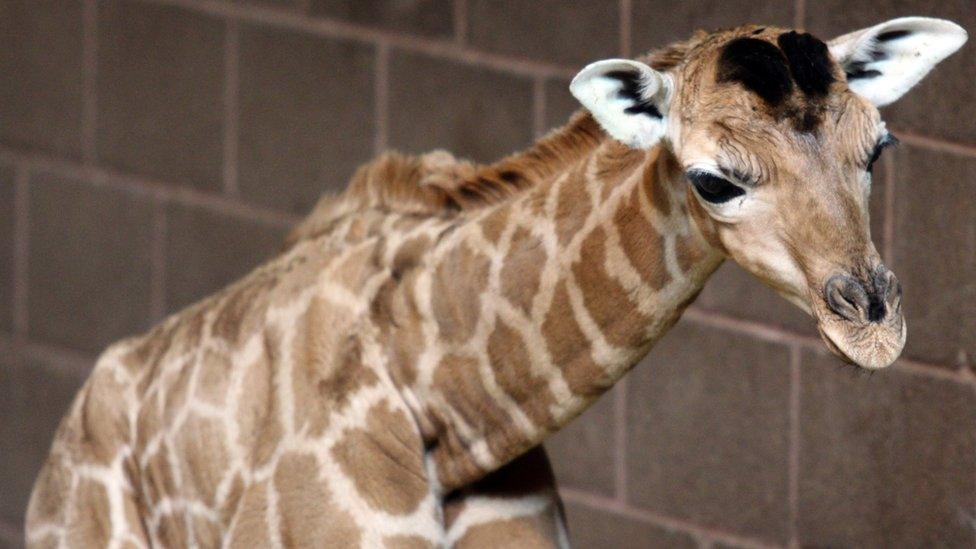Giraffes to be better protected from poachers
- Published
- comments
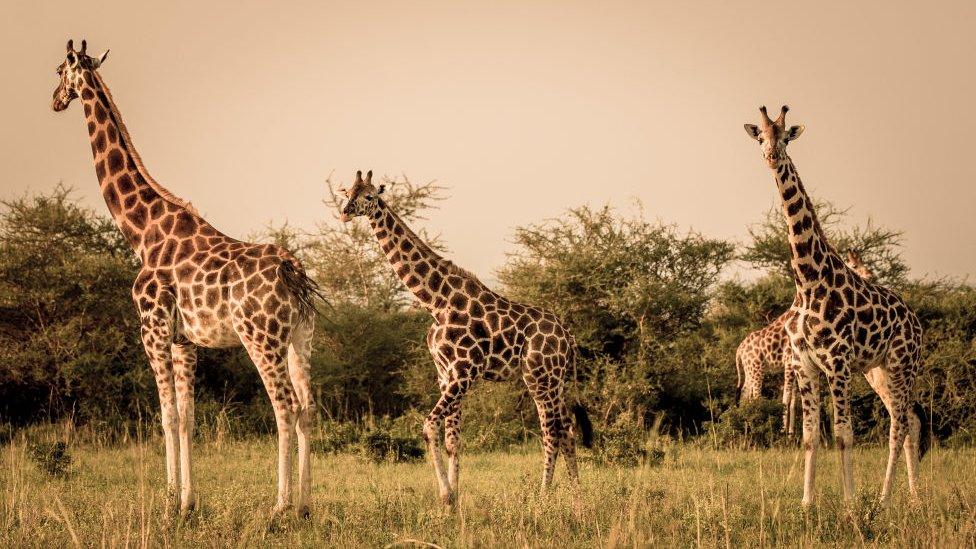
Giraffe numbers in Africa have fallen by almost half (40%) in the past 30 years. Now six African countries have pledged to do more to protect them.
The Central African Republic, Chad, Kenya, Niger, Mali, and Senegal want to help stop poachers buying and selling giraffe meat and products.
Giraffes are hunted for food but also to make jewellery, bracelets and purses.
Lots of wild animals around the world are at risk of poaching, including rhinos and elephants.
Until now there were no regulations on the buying and selling of giraffe parts, because the animal is not covered by the Convention on International Trade in Endangered Species, known as CITES.
But now greater trade protections for all nine subspecies of giraffes, have been approved at this year's CITES CoP18 in Geneva in Switzerland.
Scientists think there are nine subspecies:
Kordofan (Critically endangered)
Nubian (Critically endangered)
Masai (Endangered)
West African (Endangered)
South African (Endangered)
Rhodesian (Critically endangered)
Rothschild (Near Threatened)
Reticulated (Endangered)
Angolan (Least Concern)
The events saw the governments of different countries come together to discuss how to better protect endangered plants and animals.
It's hoped that by putting them on a special list (called Appendix II), countries will be able to work more closely together to ensure any trade in giraffe products is legal and sustainable.
Poaching is not the only reason giraffe numbers have been falling. They are also affected by the loss of their habitat through land conversion, deforestation, and humans moving into previously wild areas.
This leads to problems like vehicle collisions and poaching of animals that cause crop damage.
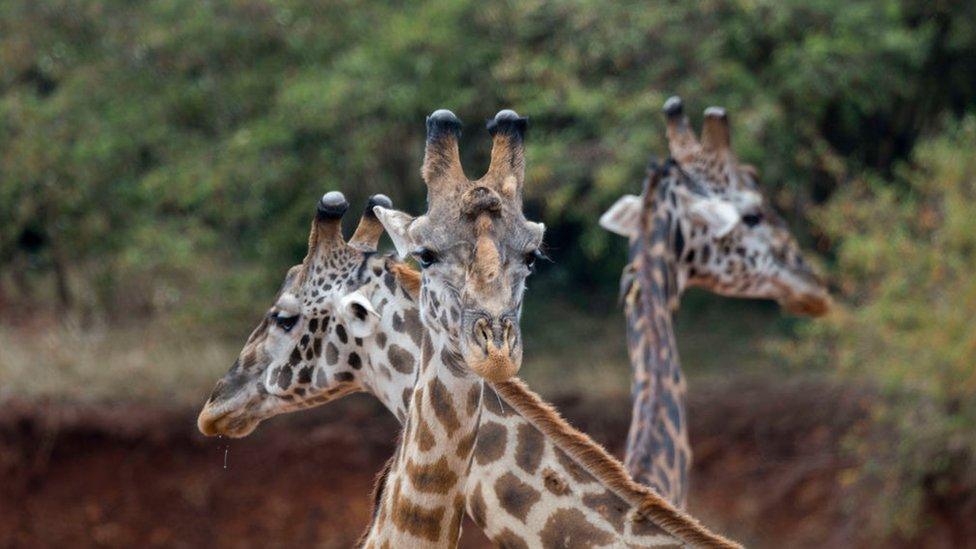
Drought, as a result of climate change, has also had an impact on the areas where giraffes live.
The Wildlife Conservation Society (WCS) works with government partners to help with giraffe conservation in countries like Cameroon, DR Congo, South Sudan, Mozambique, Uganda, Tanzania, and Rwanda - which contain habitats for five of the giraffe subspecies.
The organisation is concerned about lots of different factors which are leading to the number of giraffes going down.
Top five giraffe facts
Dr Elizabeth Bennett from WCS said: "Giraffes are in trouble but we need to take steps to protect them to avoid a crisis.
"The giraffe's future is on the line but we are optimistic for this iconic African species as it becomes listed on Appendix II."
In 2016, the status of the giraffe on the IUCN Red List of Threatened Species was changed to Vulnerable, further highlighting the increasing need to protect them.
It's thought giraffe numbers have fallen from an estimated 157,000 to 97,500 over the last 30 years.
- Published13 April 2018
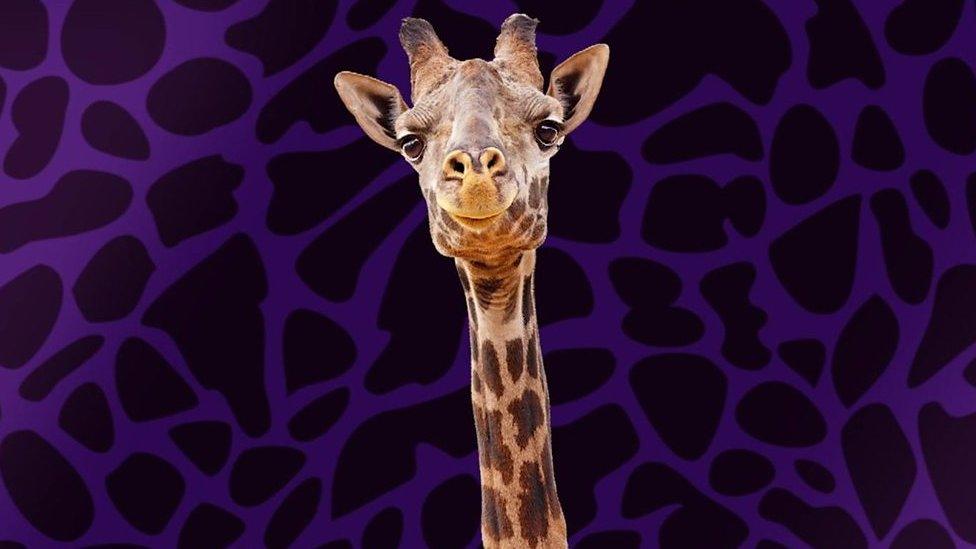
- Published21 June 2021
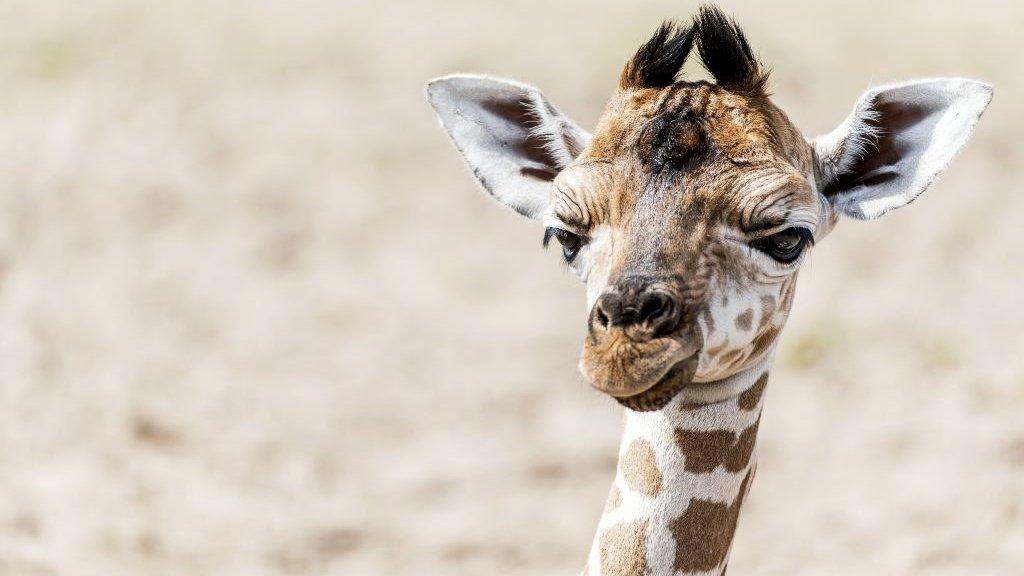
- Published7 April 2015
